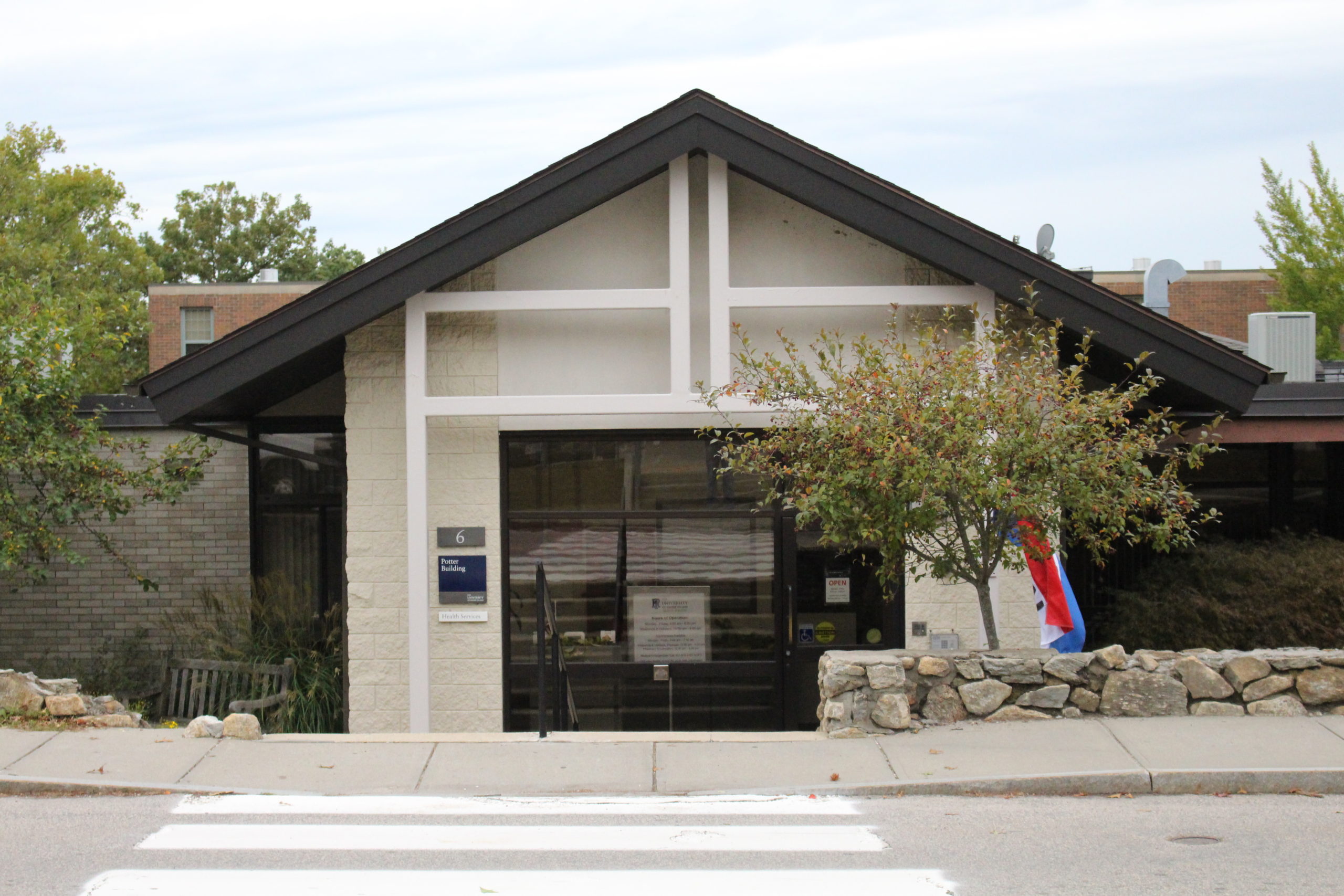URI’s Potter Building, location of Health Services. Photo by James McIntosh.
Sexually transmitted infections (STIs) are extremely common on college campuses, but Health Services at the University of Rhode Island is doing everything they can to help students avoid them.
STIs can be defined as an infection transmitted through sexual contact and caused by bacteria, viruses or parasites. Some common examples include herpes, chlamydia and gonorrhea.
According to the American Sexual Health Association (ASHA), half of all sexually active people will contract an STI by the age of 25. In 2017, The State of Rhode Island Department of Health (RIDOH) reported that STIs have become increasingly common statewide and nationally. Through the abundance of information available at the URI’s Health Services and Counseling Center, students can easily access the resources they need for STI prevention.
Dr. Christopher Nasin, medical director at URI’s Health Services, believes the creation of health services on college campuses across the country is partially due to the need for STI treatment. At URI, Nasin aligns care for concerned students with the priorities of the health services staff.
“I would say we see STIs regularly,” Nasin said. “It’s part of our wheelhouse, if you will. You know, we’ve got 17,000 young people who are in a part of their life where they’re sexually active.”
According to Nasin, the most common STI reported on campus is chlamydia. Most commonly contracted through unprotected sex, chlamydia at URI’s Health Services is treated with one dose of antibiotics with the option of prescribing the same medication to their partner as well.
According to Nasin, this is an effort from a public health standpoint to make sure the infection is being treated so it doesn’t spread further into the community.
Other STIs, such as herpes, are also a prevalent concern in the college population. According to Nasin, although relatively uncommon at URI, there have been some cases of human papillomavirus virus (HPV), human immunodeficiency virus (HIV) and syphilis on campus.
In 2015, the Center for Disease Control and Prevention (CDC) found that an estimated 20 million new cases of STIs occur every year in the United States. Half of these cases are reported by young people ages 15-24.
With numbers rising, Nasin emphasized the importance of understanding the basics of STI prevention.
“The only way you can truly prevent STIs is through methods such as barrier protection: condoms, dental dams, things of that nature,” Nasin said. “Our best ammunition is prevention.”
A new effort is being made to increase more accessible STI-specialized clinics at health services for students.
“[The clinics are] fairly novel,” Nasin said. “It was a way that we could really reach out to a larger group of students and they can make those appointments. It can be awkward on the phone. You can actually make an appointment online now through the portal.”
The health education team on campus also works alongside the medical team to help spread the message about practicing safe sex.
“[The teams] work tirelessly to go all over campus and spread the gospel of safe sex and how to prevent STIs,” Nasin said. “That’s another really large part of our efforts to diminish STIs on our campus.”
Nasin is aware that the conversation surrounding STIs on a college campus can be uncomfortable and difficult.
“One of our missions is the reproductive and sexual health of our students,” he said. “It’s a really uncomfortable and awkward diagnosis no one wants. We have counseling services on campus as well that can help with the stress related to that kind of diagnosis. We have the psychological consultation center for emotional support and we even have a couples therapy clinic [here on campus] run by a social worker, that can help couples dealing with this issue.”
For students who feel anxious about having a discussion with their partner face-to-face, RIDOH created an app, called RightTime, in hopes of easing some of that stress, in addition to the resources on their website.
“You can anonymously notify a sexual partner that they’ve been exposed to an STI,” said Nasin. “We’re hoping it makes it a little bit easier for people to reach out and to let their partners know, to keep people safe.”
STIs on campus are a real issue affecting student’s daily lives, and without proper protection, anyone is vulnerable.
“I think a lot of students operate under the false idea that ‘it won’t happen to me or it can’t happen to me,’” Nasin said. “Really take the precautions. Talking to your partners before engaging in sexual practices is always a good idea.”
Some students believe that having resources on campus about STIs can be useful. First-year student Jenna Muldoon understands why a specific clinic to care for students who may be concerned about STIs is beneficial to have on campus.
“It’s quicker than making a normal appointment through Health Services and it’s specialized for those specific needs,” Muldoon said.

